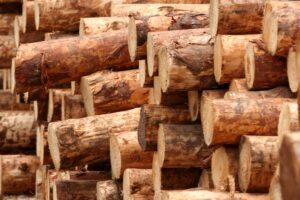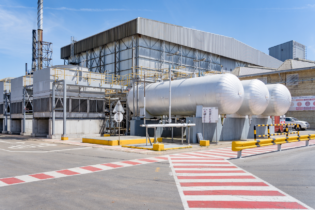Emissions from the built environment come from two main sources: the energy we consume within buildings for heating, cooling and power (operational emissions) and the emissions associated with the extraction, processing and manufacture of building products (embodied emissions).
The Manifesto “Growing Our Low-Carbon Future: Time for Timber” is a collaboration of work led by the global wood industry’s COP26 International Partners Advisory Body as well as the European Confederation of Woodworking Industries and the European Organisation of the Sawmill Industry, as well as other international partners. Chief Executive of the Timber Trade Federation, David Hopkins said, “Going into COP26 the case for embracing the forest and timber industries has never been stronger or more urgent. Wood products can create better livelihoods for millions, and a built environment which works in harmony with nature.” Roy Southey, executive director of Sawmilling South Africa, agrees that the world can make greater use of sustainable wood to transform the built environment, which is currently responsible for approximately 40 per cent of global energy related CO2 emissions. “South Africa is ripe for scaling up the use of timber in construction however many people perceive wood as rudimentary or weak. But for engineering professionals and architects of mass timber structures, there is significant opportunity for innovation, localisation and employment creation.” “The new Wood Manifesto will be a key step in not only finding new ways to use an age-old material that stores carbon but that also supports economies and livelihoods and provides everyday products,” concludes Southey. “The increased use of wood and fibre-based products from sustainably managed plantations and forests will be key in combating climate change this century,” says Jane Molony, executive director of the Paper Manufacturers Association of South Africa, who will also be chairing a side-event on this topic at COP in 11 November.The largest sustained mitigation benefit will be achieved through a sustainable forest management strategy that maintains or increases forest carbon stocks, while producing an annual sustained yield of timber, fibre or biomass. “This is exactly how our local forestry sector has operated for decades,” asserts Molony, adding that multiple trees are planted for every one which is harvested.
“From construction of mid- and high-rise buildings to single-use plastic replacements made from paper and cardboard, wood is a wonder fibre,” Molony said. Wood is a naturally renewable material which:- Sequesters carbon in forests and timber plantations as trees grow.
- Stores carbon in harvested wood products such as timber structures, pulp and paper.
- Substitutes for carbon intensive materials such as steel, concrete and plastics.
- Drives sustainable forest management leading to greater growth.
- Contributes to a circular economy as wood products can be reused, recycled, and recovered for low-carbon energy at end-of-life.
- Embed mandatory lifecycle assessments and embodied carbon thresholds within local and national building plans.
- Increase the use of wood within new builds and renovations.
- Drive the growth of the bio-based circular economy through sustainable public procurement.
- Facilitate resource efficient use of wood, paper and recycling, especially collection and sorting in municipalities, and develop measures to gain access to post-consumer fibre, an invaluable secondary raw material resource.
- Increase training to upskill workers and create new jobs to boost the development of a sustainable and circular bioeconomy.








